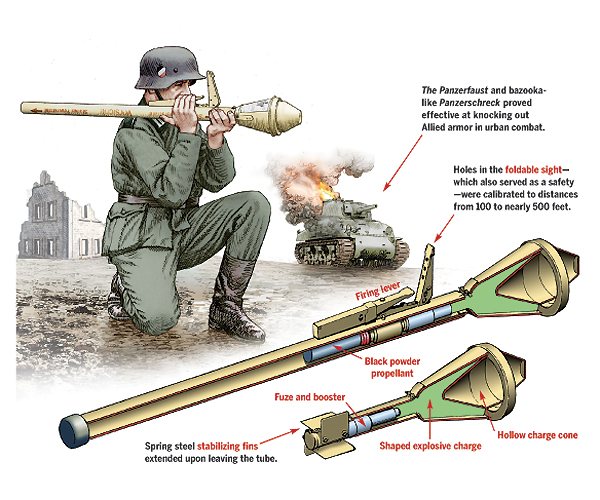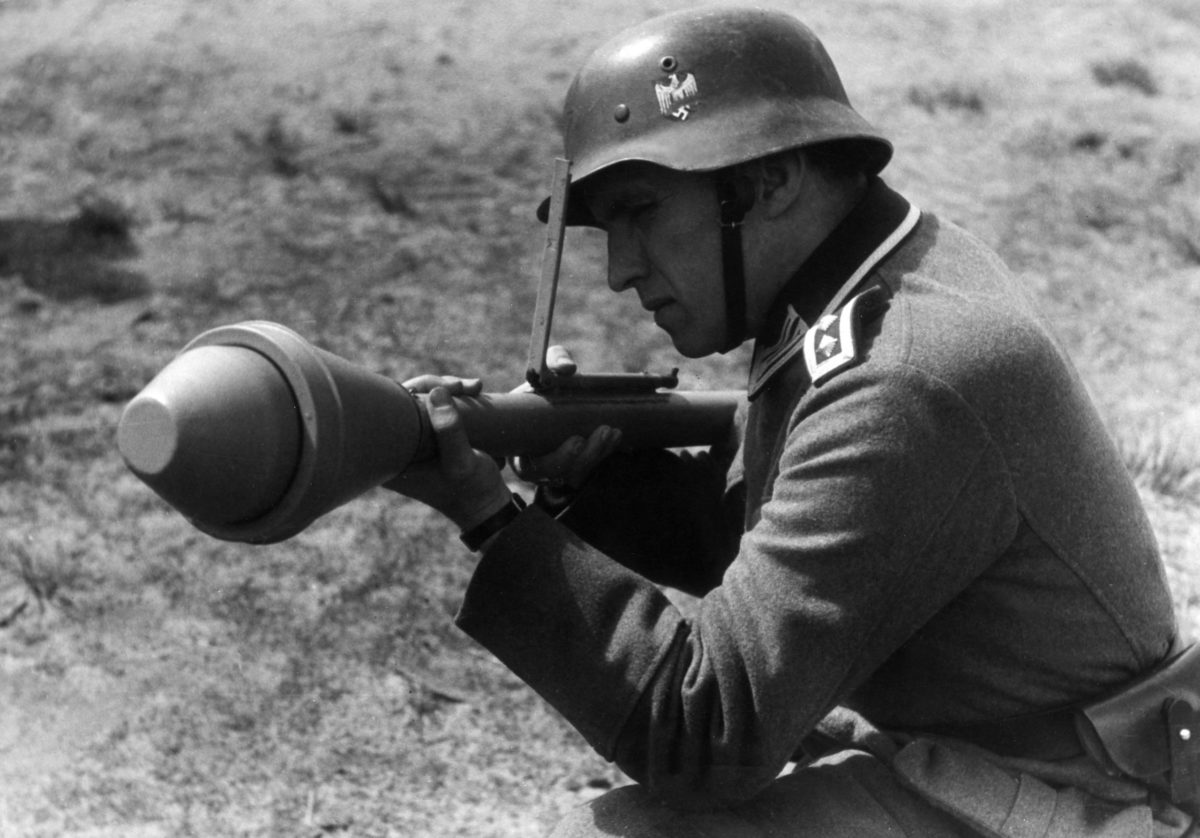As the number and quality of Soviet armored vehicles increased, Nazi Germany decided it would take more than other tanks and antitanks guns to counter them. It needed a tank-killer any infantryman could use.
An early recoilless prototype developed in the summer of 1942 comprised a shaped charge (50-50 mix of TNT and tri-hexogen) on a wooden shaft with spring metal stabilizing fins, preloaded in a low-grade steel launch tube with black powder propellant. With an effective range of 100 feet, the Faustpatrone (“fist cartridge”) could launch a projectile downrange at 92 feet per second and penetrate more than 5 inches of steel. The Wehrmacht ordered 20,000, but when issued in August 1943 its warhead was found to ricochet off or explode against the sloped armor of Soviet T-34s.

By then, however, the improved Panzerfaust (“armor fist”) was already in use. Larger but lighter than the Faustpatrone, the Panzerfaust had a harder-hitting 1.8-pound warhead that could penetrate up to 8 inches of armor. Introduced in September 1944, the Panzerfaust 60 was the most common version (1.3 million of the 6 million produced), with a wider tube diameter that boosted the muzzle velocity to 150 feet per second and its range to 200 feet. Germany later experimented with reusable tubes, but it was too late to stop the Soviets.





